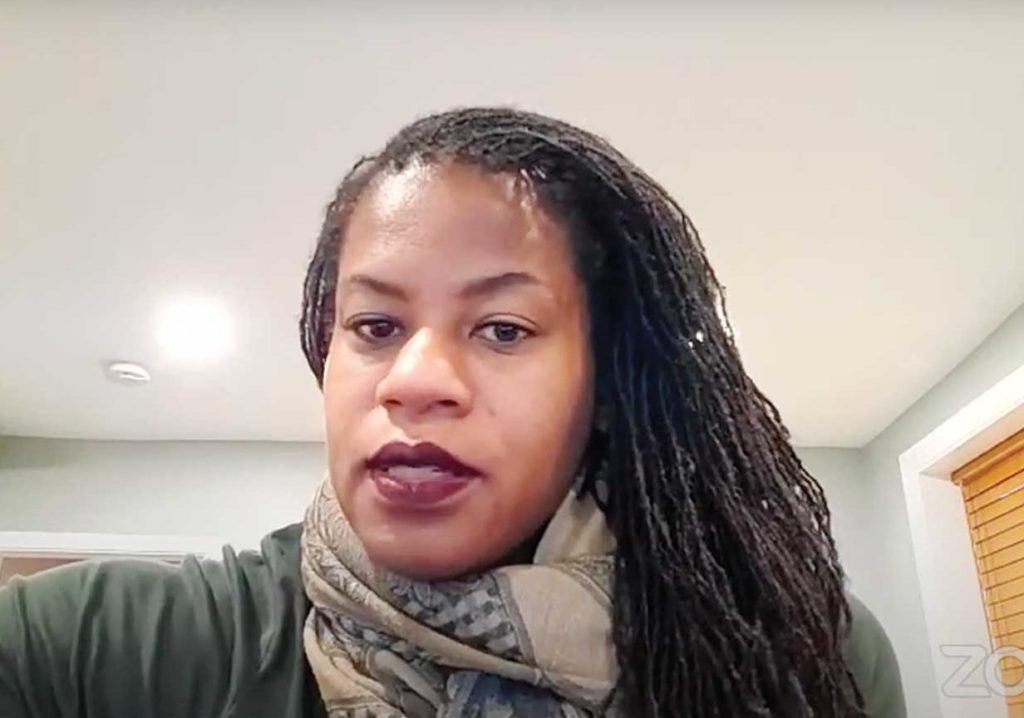Counselors, cops clash over tear gas
Ordinance aimed at curtailing nonlethal weapons

After a summer of protests, Boston city councilors are looking for more protocol on how the police control crowds. In a working session on Nov. 18, Councilors Andrea Campbell, Lydia Edwards and Ricardo Arroyo attempted to bring Boston police officers on board with restrictions on tear gas, projectiles and other crowd control weapons, but did not receive support.
The working session was focused on Arroyo’s ordinance, which stipulates that before the Boston Police Department can use any tear gas or projectiles to disperse any crowd of more than 10 people, they must give two separate warnings and wait two minutes. This would apply to pepper spray, rubber bullets and more.
Part of the purpose of the working session was to hear officers’ perspectives to help inform the ordinance’s final wording.
“We really are hoping they can provide the guidance, or what that discretion looks like, at the same time signal to the people of Boston and anybody else [that] their safety and their interests are at heart,” Edwards told the Banner.
In the working session, Sgt. Kevin McGoldrick clarified why officers would prefer not to have any additional restrictions on projectiles. One reason is that illegal activity in groups of 10 or more doesn’t just happen at protests.
“Unfortunately, I’ve been at very large bar fights and house parties where people are intoxicated and people are being violently assaulted. OC [oleoresin capsicum, or pepper spray] is a very effective way of stopping that kind of harm,” McGoldrick said during the working session.
“Primarily, the lack of exception [for] very experienced, well-trained officers to apply their judgement to the situation, I think is problematic,” he continued.
McGoldrick objects to the legislation because, he says, the laws would override the judgement and experience of officers who may discern that something like tear gas is necessary, given that every situation is different.
But in the ordinance, the councilors point out that the chemicals cause several harms to the body and the environment.
“Chemicals in crowd control weapons like tear gas and pepper spray are powerful sensory irritants, which cause blurred vision, difficulty swallowing, coughing, rashes, vomiting, dermal pain, respiratory distress, and psychological effects of disorientation and agitation,” the ordinance reads.
And prolonged exposure can cause blindness and chemical burns, among other ailments. Rubber bullets and projectiles are also painful or even lethal, depending on the speed and the part of the body they hit.
“We do not doubt the police or believe this administration is trying to hurt people. That is not the goal of this ordinance, and we said that several times,” Edwards said.
At the working session, Campbell confronted the sergeant about not receiving any notes from the BPD on changes to the language of the ordinance.
“If the position is [that the] BPD is just not for this ordinance, fine, then say that,” Campbell said, noting that they will not always agree on everything. McGoldrick responded by confirming that the BPD doesn’t want the ordinance, because they have evidence that proves the restrictions already in place are sufficient.
Currently, the BPD only uses OC spray if someone is being directly attacked, and it has to be approved by the police commissioner. Other such weapons are only used during riots, and there isn’t always time to give a warning, according to McGoldrick.
ACLU Massachusetts had notes for the ordinance, which Rahsaan Hall, director of the group’s racial justice program, outlined during the working session. The group advocated for inserting a subcategory that requires the officer to use all de-escalation techniques before using kinetic impact projectiles or chemicals. That would include removing officers at the scene who may be contributing to an escalated situation. Hall has also previously called for an outright ban of the crowd control agents.
Officers also use crowd-control agents to stop the destruction of property.
“I recognize that that is illegal activity that I do not want to see,” said Councilor Arroyo. “But I also recognize that something that could fatally strike that person, or something that could end that person’s life or disable them forever, is not an equitable use of force.”
In 2005, the city paid the family of Boston University student Victoria Snelgrove $5.1 million in a wrongful death lawsuit settlement after a BPD officer struck her in the face with a pepper spray projectile in an Oct. 2004 incident, killing her.
As chair of the Committee on Government Operations, Edwards said she hopes to put the ordinance to a vote by the end of the year or early next year. She and the cosponsors are looking over all research and suggestions to eventually come to a consensus.







